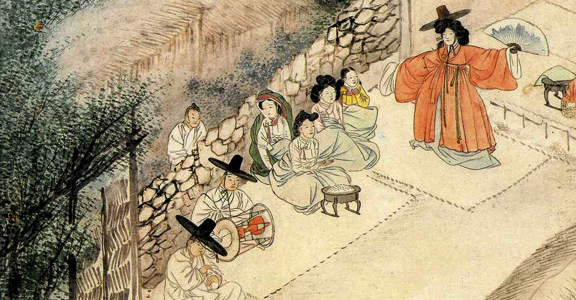Aubury
Active member
Introduction
Metin2 has been around for almost two decades now, yet there are still many unanswered questions about the gameplay, the classes, the creatures, lands, and many more topics. How did everything come into existence? Are some parts of the game inspired by real-life events? These were my questions prior to researching the mystical Shamans. At some point after the game launched, it seems the main objective of the game design department was to develop the most attractive Itemshop available at the time. This left a void where character development was supposed to thrive, and much of the original storyline was lost to the neverending battle of picking up drops from metins and hostile creatures. No more! I hereby present the historical origin of everyone's favorite buffer class: the Shaman.
Concept origin
Back in 2004 when the game was launched in Korea, the available characters were gender-locked. Shamans were female-only for the first three years, until male shamans were introduced to the game in 2007, along with female warriors and suras and male assassins. This tiny clue guided my search to the roots of Korean shamanism.
The practice of shamanism in Korea first began with nobles. In the course of time, many communities had acquired their own shaman. Their role was to help the community by removing curses, placing good luck on someone, performing healing rituals, wishing for a bountiful harvest, reconciling the living and the dead, and communicating with spirits. Shamans were almost exclusively female (무당 in Korean), and male shamans (박수무당 in Korean) were rarely found. Shamans were the spiritual leaders in their community and had a large influence due to the powers they held and the services they provided.
Artifacts and tools
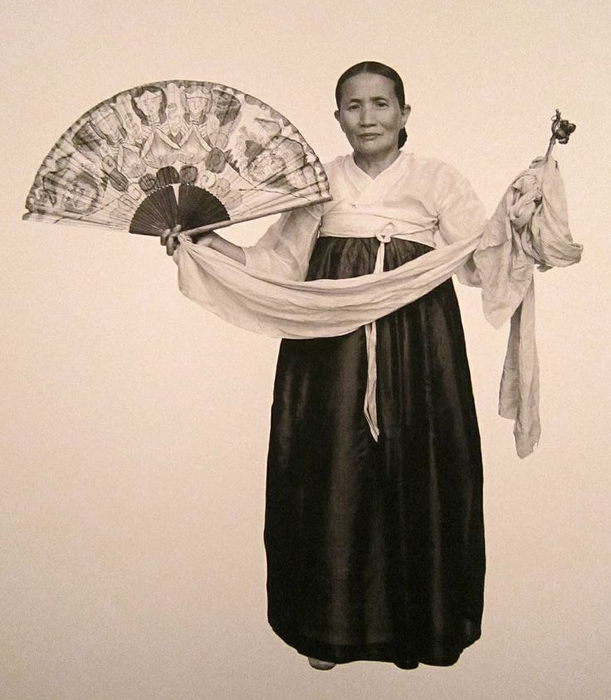
Look at the shaman on the right. Something looks familiar, right?
Shamanism can be described as somewhat of a performance. The various items (무구 in Korean) used during rituals and ceremonies, the clothing and long robes, the manner of singing and expression were unique attributes. Think of it as a theatre performance, but with elements of mysticism and pansori.
Fans, bells, tridents and swords were favorites among shamans. Bells and other tools, which produced sounds, were effective at repelling evil spirits. It is said the spirits feared such ringing and metallic noise, but the sounds also provided musical elements to shamans' performances. Fans were used to depict a certain deity, which the shaman was portraying or worshipping during a ceremony.
This paraphernalia could be obtained by: passing it down from an elder shaman to an apprentice shaman; having it be crafted by a skilled artisan; by donation from the shaman's community.
Shamans in Metin2
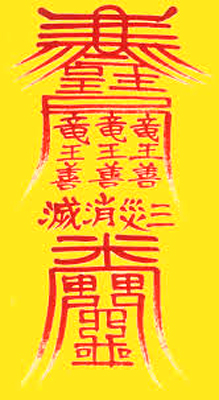
Shamans are powerful users of natural forces in the game. They are adept at manipulating fire and lightning, and they are able to rejuvenate their allies by creating protective charms. There was much thought poured into creating some of their spells, which will be explained in this chapter.
Talismans and charms are part of a shaman's arsenal. Most talismans contain some form of written hanzi or Chinese characters, as Korea used this writing system before developing their own. The hanzi used in talismans can have meaning, though sometimes only the shaman will possess knowledge of the design or pattern for a particular talisman.
Let's examine some skills available to shamans!
Dragon path offers three interesting skills: flying talisman, blessing and reflect damage.
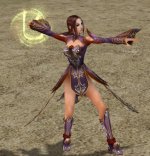
Flying talisman casting animation contains the hanzi 匕. Its direct meaning is dagger, though it can also carry other definitions, which are not related in this context. It would make sense for the shaman to throw a concentrated sphere of mana with the intent to hurt their opponent, hence the inscription on the sphere.
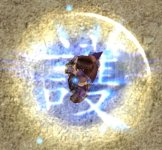
Blessing and reflect damage play a protective role, which is signified by the use of 護 hanzi in the skill animation. Its literal meaning is to protect, to safeguard. This spell is akin to a charm, which is placed by the shaman on themselves or on other people.
Light path has two unique skills: dance with the wind, and cure.
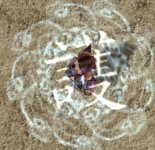
Dance with the wind has the same skill animation as blessing and reflect damage, meaning the charm is supposed to provide protection.
Cure restores life energy to the target. The skill icon is masterfully crafted to contain a hidden hanzi. If you look closely, you'll notice 血, which translates to blood, or life force. Historically, shamans also performed healing and longevity rituals, so they are able to restore life force.
Final remarks
If you would like to learn more about the history of Korean shamans, there is a multitude of websites covering this topic. From government websites, to personal blogs and research articles.
For a crash course, you can visit:
Shamanism in Korea 상세보기|Citizen JournalistsEmbassy of the Republic of Korea to Norway
노르웨이 지역 정보, 재외국민 영사서비스, 공관 소식, 기타 생활정보 안내.
overseas.mofa.go.kr
